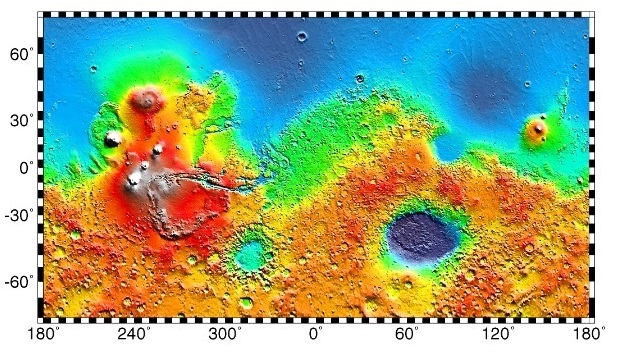Mars 2 - Space Probes Return Detailed Pictures of the Martian Surface
Last week, I gave a general description of Mars and a brief history. Human fascination with Mars led to many attempts to send probes across interplanetary space to conduct a close examination of Mars and send pictures back to Earth. Interplanetary exploration is very complex and difficult. It is estimated that as many as two thirds of the space probes sent to Mars either never made to Mars or failed to return any information to Earth. Some probes did arrive and sent back pictures of the Martian surface.
In 1964, NASA launched two identical Mars probes called Mariner 3 and Mariner 4. Mariner 3 failed on launch but Mariner 4 launched successfully and, after a seven month journey, transmitted pictures of the Martian landscape as it flew past Mars. The images returned by Mariner 4 were the first close up pictures of another planet ever taken by the human race. More Mariners were sent to Mars, some failed and some succeeded. Mariner 9 was the first probe to achieve orbit around Mars. Detailed pictures of Mars and information about surface conditions were sent back to Earth by the Mariner Series.
The Soviet Union began sending probes to Mars in the early 1970s. They sent a series of probes and actually landed two probes on the surface. One crash-landed and the other landed softly but only sent a few seconds of data transmissions. During the 1970s, the Soviets continued to send probes to Mars with partial success.
NASA launched two probes called Viking 1 and Viking 2 to Mars in 1975. The primary purpose of the Viking probes was to search for signs of life in the Martian atmosphere and to examine Martian weather, Marquakes and the Martian magnetic field. There were indications that there might be life on Mars but the findings were ambiguous and continued to be studied upto the present. Many detailed images of the Martian surface were returned by the Viking probes.
NASA had attempted to launch a Martian orbital surveyor probe to provide detailed images of the whole planet in 1992 but the launch failed. Another mission was implemented which resulted in the Mars Global Surveyor mission achieving orbit around Mars in September of 1997. The MGS carried out orbital maneuvers and then settled into a circular orbit for its main mission in 1999. The MGS carried out observations of the entire planetary surface, the whole atmosphere, and even penetrated beneath Martian surface. The MGS returned more information about Mars that all the prior probes combined.
The NASA Mars Pathfinder mission landed a base station and a rover on the Martian surface in 1997. The small robotic vehicle was called the Sojourner. It was the first successful landing of a mobile research vehicle on Mars. In addition to conducting scientific experiments on the Martian surface, Sojourner also allowed NASA to test a number of engineering designs for Martian landings.
NASA and the space agencies of other countries continued to launch Martian probes and our knowledge of Mars has continued to increase. Landers have roved around the Martian terrain, taking samples and carrying out experiments. Most of the information returned by NASA probes have been archived and made available to the public.
Image of the Martian surface with color indicating elevation:
